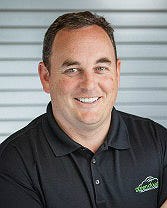Partners Lead Disaster Recovery Post Hurricanes Harvey, IrmaPartners Lead Disaster Recovery Post Hurricanes Harvey, Irma
Disaster recovery companies are driving down to help with the Irma cleanup.


James Anderson
As Hurricane Irma hurtles out of Florida and into the remainder of the Southeast as a tropical depression, people across the state are beginning to take full inventory of the storm’s damage, and businesses are no exception.
Companies face not only danger to their physical property, but the possibility of losing valuable data if they have not prepared adequately. That’s where disaster recovery comes into play.
The response to Hurricane Harvey offers an example of the painstaking process of data protection and recovery that survivors of Irma and future natural disasters can apply.
Four data center and cloud providers shared with us how they and their partners played a role in Harvey’s clean-up.
Preparation
These disaster-recovery companies had a plan in place before Harvey slammed into Texas at 130 miles per hour.

Green Cloud’s Keith Coker
Keith Coker, chief operating officer of Green Cloud Technologies, says that although not many of his customers declared a disaster, his company prepped for the storm with the assumption that any of them might.
“That’s a pretty heavy workload that we take on as a company to make sure that we have the resources, the staffing — that we’ve done everything that we can ahead of the event to be ready for our customers that need that service,” he told Channel Partners.
But the importance of being prepared applies not just to the disaster-recovery provider, but to its customers and their partners. Coker lists multiple levels of preparedness that he saw from customers that dealt with Harvey. The most proactive of businesses had already moved their production schedules to a secondary location. Others called in several days prior to the storm to ensure that there was compatibility with Green Cloud solutions. But some others instead reacted, declaring a disaster after the fact, and asking Green Cloud for help.
Another circumstance involved an end user that did not use Green Cloud solutions but worked with a mutual partner. This business facility sat behind a dam that would soon be released.

Datto’s Matt Richards
“They actually knew ahead of time that their facility was going to be flooded, and we were able to step in, and in a very short order – in a matter of hours – create them an environment with which they could keep running and have a place to store their data and remain active before they actually got flooded,” Coker said.
Matt Richards, Datto‘s vice president of product marketing, says the most successful partners were the ones that virtualized their customers’ environments prior to the disaster. This supports the old saying that “fortune favors the prepared.”
“It’s a terrible thing to say …
… as the storm bears down on areas that are really running out of time,” Richards said. “Those folks that had those backups running, when the time came they simply moved over to run those backups in our cloud in disaster-recovery mode, and they could get back to work without really any challenge.”

Evolve IP’s Don Mennig
There’s evidence that businesses are adopting this mindset of preparedness. A Zetta study conducted earlier this year found that disaster recovery is the No. 1 priority for companies that are migrating to the cloud.
Don Mennig, Evolve IP‘s senior vice president of marketing, says businesses need to consider the survival process in two phases, the first being planning.
“Putting together a DR plan and cobbling together resources with a storm approaching is a surefire way to find trouble,” he told Channel Partners.
Boots On the Ground
Datto sent a team to Austin, Texas, as Harvey hit land and moved toward Houston. The company then settled in a partner’s office during the aftermath of the hurricane. Datto gave onsite support to local partners, offering them access to its backup appliances and continuity devices.
But business recovery was on the backburner for the initial few days following the hurricane as the people of Houston faced more primal concerns. Datto was in position to help but had to wait for the cleanup and recovery timeline to mature.
“Generally people look at the Red Cross and they look at the news and they look at the people wading through the water to rescue you from your house,” Richards said. “That happens for days, and it’s not until you get through personal safety and you get through making sure your property is OK and you have a place to go that you start thinking about business recovery in most cases.”

Digital Realty’s John Stewart
Richards says the most common thing customers asked of Datto and its partners after the initial cleanup was Internet connectivity. In one case, a business with a flooded lobby had a functioning data center but no Internet; a Datto 4G networking device did the trick.
Digital Realty, the San Francisco-based data center and colocation provider, brought along thousands of gallons of fuel that could be used to run generators. The company ended up loaning gas to the car of a financial-services customer.
“These events are no joke. Our thoughts and prayers are with the people of both cities and of course our team and their safety, and our customers as well. These are major events,” said John Stewart, Digital Realty’s senior vice president.
Team Effort
Putting boots on the ground wouldn’t be possible for most disaster disaster-recovery companies without the help of partners. Green Cloud only has …
… one employee in Houston and sells all of its services through third parties. The company opened a data center in Houston last year at the request of its VARs and MSPs.
In everyday business, and especially in a disaster like Harvey, partners represent Green Cloud.
“Our third-party partners are our face to our customers. We don’t necessarily have face time with the end users that use our services,” Coker said. “Our partners are local to Houston, and they have the local connections.”
Coker says the majority of Green Cloud’s partners privately label the company’s offerings, which would make it even more ludicrous for Green Cloud to interact upfront with the end users.
“If you were to go ask people in Houston, they probably would not know who Green Cloud was. But they would know our partners by name and the cloud product they provide,” he said. “These partners are our trusted technology consultants for all of these businesses in and around the Houston area, and as they get calls, they would leverage our infrastructure in Houston or even outside Houston in one of our other five data centers to restore services.”
And although these cloud and data center providers were glad that they visited the affected cities in person and will do so again for Florida, they know that they rely on their partners. Coker says this is because the reseller is aware of each user’s “idiosyncrasies.”
“They’re the people who understand the customers. They understand their needs. They understand the specialties of every customer. No two customers look alike,” he said.
Read more about:
AgentsAbout the Author
You May Also Like


